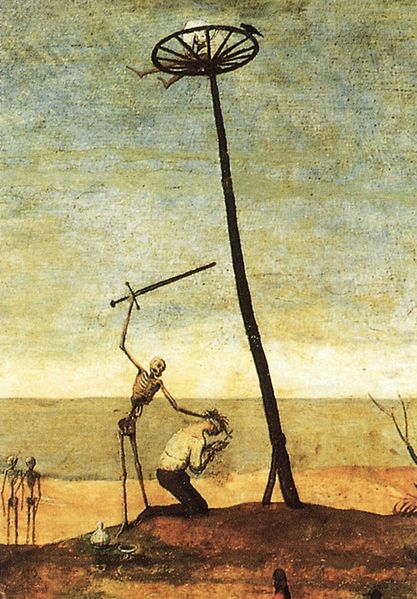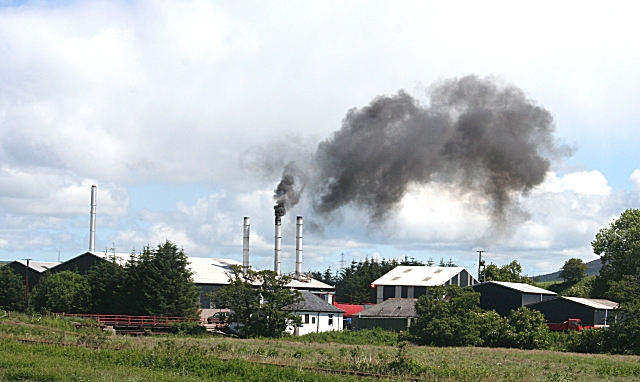|
Executioner
An executioner, also known as a hangman or headsman, is an official who executes a sentence of capital punishment on a legally condemned person. Scope and job The executioner was usually presented with a warrant authorising or ordering him to ''execute'' the sentence. The warrant protects the executioner from the charge of murder. Common terms for executioners derived from forms of capital punishment—though they often also performed other physical punishments—include hangman (hanging) and headsman (beheading). In the military, the role of executioner was performed by a soldier, such as the ''provost''. A common stereotype of an executioner is a hooded medieval or absolutist executioner. Symbolic or real, executioners were rarely hooded, and not robed in all black; hoods were only used if an executioner's identity and anonymity were to be preserved from the public. As Hilary Mantel noted in her 2018 Reith Lectures, "Why would an executioner wear a mask? Everybody k ... [...More Info...] [...Related Items...] OR: [Wikipedia] [Google] [Baidu] |
List Of Executioners
This is a list of people who have acted as official executioners. Algeria Alger Monsieur d'Alger: The Executioners of the French Republic In 1870 the Republic of France abolished all local executioners and named the executioner of Algiers, Antoine Rasseneux, Éxécuteur des Arrêts Criminels en Algérie, which became France's official description of the executioner of Algeria's occupation. From then on there would be one only executioner to carry out death sentences for all of Algeria. Since the colony's executioner was required to live in Algiers, people soon started to refer to him as ''"Le Monsieur d'Alger"'' ("The Man From Algiers"). Upon his nomination, Rasseneux was permitted to choose four among France's and Algeria's former local executioners to be his aides. Australia Austria Hall in Tirol Meran Salzburg Steyr Vienna Belgium Brazil After 1808, during the Portuguese-Brazilian Kingdom (1808–1822) and the Empire (1822–1889), when Br ... [...More Info...] [...Related Items...] OR: [Wikipedia] [Google] [Baidu] |
Hanging
Hanging is the suspension of a person by a noose or ligature around the neck.Oxford English Dictionary, 2nd ed. Hanging as method of execution is unknown, as method of suicide from 1325. The ''Oxford English Dictionary'' states that hanging in this sense is "specifically to put to death by suspension by the neck", though it formerly also referred to crucifixion and death by impalement in which the body would remain "hanging". Hanging has been a common method of capital punishment since medieval times, and is the primary execution method in numerous countries and regions. The first known account of execution by hanging was in Homer's ''Odyssey'' (Book XXII). In this specialised meaning of the common word ''hang'', the past and past participle is ''hanged'' instead of ''hung''. Hanging is a common method of suicide in which a person applies a ligature to the neck and brings about unconsciousness and then death by suspension or partial suspension. Methods of judicial hanging ... [...More Info...] [...Related Items...] OR: [Wikipedia] [Google] [Baidu] |
Decapitation
Decapitation or beheading is the total separation of the head from the body. Such an injury is invariably fatal to humans and most other animals, since it deprives the brain of oxygenated blood, while all other organs are deprived of the involuntary functions that are needed for the body to function. The term ''beheading'' refers to the act of deliberately decapitating a person, either as a means of murder or as an execution; it may be performed with an axe, sword, knife, machete or by mechanical means such as a guillotine or chainsaw. An executioner who carries out executions by beheading is sometimes called a headsman. Accidental decapitation can be the result of an explosion, a car or industrial accident, improperly administered execution by hanging or other violent injury. Suicide by decapitation is rare but not unknown. The national laws of Saudi Arabia, Yemen, and Qatar permit beheading; however, in practice, Saudi Arabia is the only country that continues to behead i ... [...More Info...] [...Related Items...] OR: [Wikipedia] [Google] [Baidu] |
Marcel Chevalier
Marcel Chevalier (28 February 1921 in Montrouge, Hauts-de-Seine – 8 October 2008 in Vendôme) worked as the last chief executioner ( Monsieur de Paris) in France. He succeeded his wife's uncle, André Obrecht, in 1976 and held his position until 1981, when capital punishment was abolished under president François Mitterrand and justice minister Robert Badinter. The method of application of the death penalty for civil capital offences in France from 1791 to 1981 was beheading with the guillotine. Military executions were by firing squad. Chevalier, who started his executioner's career in 1958, performed about 40 executions. After his appointment as chief executioner on 1 October 1976, he executed only two people. They were the last two executions in France: *Jérôme Carrein, condemned twice for the murder and rape of an eight-year-old girl, was guillotined on 23 June 1977 in Douai. * Hamida Djandoubi, for having tortured and strangled his former nurse, was guillotined on 10 Sep ... [...More Info...] [...Related Items...] OR: [Wikipedia] [Google] [Baidu] |
Capital Punishment
Capital punishment, also known as the death penalty, is the state-sanctioned practice of deliberately killing a person as a punishment for an actual or supposed crime, usually following an authorized, rule-governed process to conclude that the person is responsible for violating norms that warrant said punishment. The sentence ordering that an offender is to be punished in such a manner is known as a death sentence, and the act of carrying out the sentence is known as an execution. A prisoner who has been sentenced to death and awaits execution is ''condemned'' and is commonly referred to as being "on death row". Crimes that are punishable by death are known as ''capital crimes'', ''capital offences'', or ''capital felonies'', and vary depending on the jurisdiction, but commonly include serious crimes against the person, such as murder, mass murder, aggravated cases of rape (often including child sexual abuse), terrorism, aircraft hijacking, war crimes, crimes against ... [...More Info...] [...Related Items...] OR: [Wikipedia] [Google] [Baidu] |
Death Sentence
Capital punishment, also known as the death penalty, is the state-sanctioned practice of deliberately killing a person as a punishment for an actual or supposed crime, usually following an authorized, rule-governed process to conclude that the person is responsible for violating norms that warrant said punishment. The sentence ordering that an offender is to be punished in such a manner is known as a death sentence, and the act of carrying out the sentence is known as an execution. A prisoner who has been sentenced to death and awaits execution is ''condemned'' and is commonly referred to as being "on death row". Crimes that are punishable by death are known as ''capital crimes'', ''capital offences'', or ''capital felonies'', and vary depending on the jurisdiction, but commonly include serious crimes against the person, such as murder, mass murder, aggravated cases of rape (often including child sexual abuse), terrorism, aircraft hijacking, war crimes, crimes against h ... [...More Info...] [...Related Items...] OR: [Wikipedia] [Google] [Baidu] |
Guillotine
A guillotine is an apparatus designed for efficiently carrying out executions by beheading. The device consists of a tall, upright frame with a weighted and angled blade suspended at the top. The condemned person is secured with stocks at the bottom of the frame, positioning the neck directly below the blade. The blade is then released, swiftly and forcefully decapitating the victim with a single, clean pass so that the head falls into a basket or other receptacle below. The guillotine is best known for its use in France, particularly during the French Revolution, where the revolution's supporters celebrated it as the people's avenger and the revolution's opponents vilified it as the pre-eminent symbol of the violence of the Reign of Terror. While the name "guillotine" itself dates from this period, similar devices had been in use elsewhere in Europe over several centuries. The use of an oblique blade and the stocks set this type of guillotine apart from others. The display ... [...More Info...] [...Related Items...] OR: [Wikipedia] [Google] [Baidu] |
Middle Ages
In the history of Europe, the Middle Ages or medieval period lasted approximately from the late 5th to the late 15th centuries, similar to the post-classical period of global history. It began with the fall of the Western Roman Empire and transitioned into the Renaissance and the Age of Discovery. The Middle Ages is the middle period of the three traditional divisions of Western history: classical antiquity, the medieval period, and the modern period. The medieval period is itself subdivided into the Early, High, and Late Middle Ages. Population decline, counterurbanisation, the collapse of centralized authority, invasions, and mass migrations of tribes, which had begun in late antiquity, continued into the Early Middle Ages. The large-scale movements of the Migration Period, including various Germanic peoples, formed new kingdoms in what remained of the Western Roman Empire. In the 7th century, North Africa and the Middle East—most recently part of the Ea ... [...More Info...] [...Related Items...] OR: [Wikipedia] [Google] [Baidu] |
Knacker
A knacker (), knackerman or knacker man is a person who removes and clears animal carcasses (dead, dying, injured) from private farms or public highways and renders the collected carcasses into by-products such as fats, tallow (yellow grease), glue, gelatin, bone meal, bone char, sal ammoniac, soap, bleach and animal feed. A knacker's yard or a knackery is different from a slaughterhouse or abattoir, where animals are slaughtered for human consumption. Since the Middle Ages, the occupation of "knacker man" was frequently considered a disreputable occupation. Knackers were often also commissioned by the courts as public executioners. Etymology The oldest recorded use of the word "knacker" dates to 1812, meaning "one who slaughters old or sick horses" and in 1855 "to kill, castrate", and is believed to be the same word as the earlier knacker/nacker "harness-maker" from the 1570s, surviving in 18th century dialects. The sense extension is perhaps because "knackers" provi ... [...More Info...] [...Related Items...] OR: [Wikipedia] [Google] [Baidu] |
Western Europe
Western Europe is the western region of Europe. The region's countries and territories vary depending on context. The concept of "the West" appeared in Europe in juxtaposition to "the East" and originally applied to the ancient Mediterranean world, the Roman Empire (Western Roman Empire and Eastern Roman Empire), and medieval " Christendom" (Western Christianity and Eastern Christianity). Beginning with the Renaissance and the Age of Discovery, roughly from the 15th century, the concept of ''Europe'' as "the West" slowly became distinguished from and eventually replaced the dominant use of "Christendom" as the preferred endonym within the region. By the Age of Enlightenment and the Industrial Revolution, the concepts of " Eastern Europe" and "Western Europe" were more regularly used. Historical divisions Classical antiquity and medieval origins Prior to the Roman conquest, a large part of Western Europe had adopted the newly developed La Tène culture. As the Roman ... [...More Info...] [...Related Items...] OR: [Wikipedia] [Google] [Baidu] |








